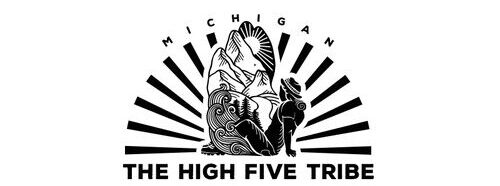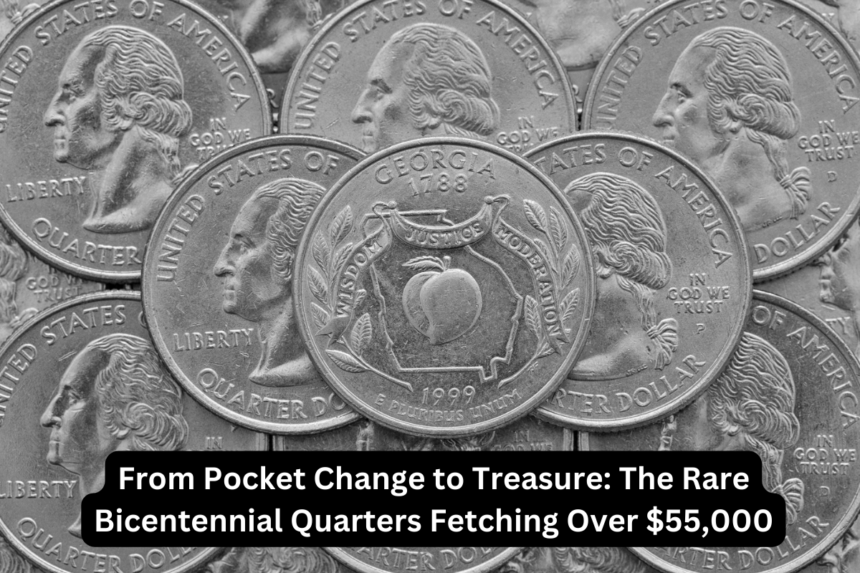Introduction:
Bicentennial quarters, minted in 1975 and 1976 to commemorate the 200th anniversary of the United States, are a popular collectible for numismatists. While most of these quarters are relatively common and hold modest value, certain rare variants have become highly sought after, with some fetching prices of $55,000 or more. In this article, we’ll take a closer look at these rare bicentennial quarters, their unique features, and why they command such high prices.

The History of Bicentennial Quarters
Bicentennial quarters were part of a larger series of commemorative coins issued to celebrate America’s 200th birthday. These quarters featured a special reverse design by Jack L. Ahr, depicting a colonial drummer boy and a victory torch encircled by 13 stars. The obverse retained the familiar portrait of George Washington. Understanding the history and significance of these quarters sets the stage for appreciating their collectible value.
Identifying Rare Bicentennial Quarters
Not all bicentennial quarters are created equal. Rare variants that command high prices often possess certain distinguishing features:
- Proof Quarters: These are specially minted coins with a mirror-like finish, intended for collectors.
- Silver Composition: Some bicentennial quarters were struck in 40% silver, making them more valuable than their copper-nickel counterparts.
- Error Coins: Coins with minting errors, such as double strikes or off-center strikes, are particularly prized by collectors.

The $55,000+ Bicentennial Quarters
A select few bicentennial quarters have sold for extraordinary prices at auctions. These high-value coins typically exhibit a combination of rarity, exceptional condition, and unique attributes. For example, an error coin with a dramatic minting mistake or a pristine proof coin in perfect condition can achieve such high values. The specific history of these coins, including previous ownership and auction results, also plays a crucial role in their valuation.
Why These Quarters Are So Valuable
Several factors contribute to the high value of certain bicentennial quarters:
- Rarity: Limited mintage, unique errors, and specific production runs increase a coin’s rarity.
- Condition: Coins in mint or near-mint condition are significantly more valuable.
- Demand: High demand from collectors drives up the price, especially for coins with unique features or historical significance.
Tips for Collectors
For those interested in collecting bicentennial quarters, here are some tips to consider:
- Authentication: Ensure coins are authenticated by reputable grading services.
- Condition: Focus on acquiring coins in the best possible condition.
- Research: Stay informed about market trends and recent auction results.
- Preservation: Properly store and handle coins to maintain their condition and value.
Conclusion:
Rare bicentennial quarters represent a fascinating intersection of American history and numismatics. Understanding what makes these coins so valuable can enhance your appreciation as a collector and guide you in making informed decisions. Whether you’re a seasoned numismatist or a novice collector, these rare quarters offer a glimpse into a unique chapter of U.S. coinage and the potential for significant investment returns.
FAQ’s:
1. What makes certain Bicentennial quarters worth $55,000 or more?
Certain Bicentennial quarters command high prices due to a combination of rarity, unique minting errors, exceptional condition, and specific attributes such as being proof coins or having a silver composition. The historical significance and high demand from collectors also contribute to their high value.
2. How can I identify a valuable Bicentennial quarter?
Valuable Bicentennial quarters often have distinguishing features such as being struck in 40% silver, having a proof finish, or exhibiting minting errors like double strikes or off-center strikes. Checking for these attributes and verifying the coin’s condition with reputable grading services can help identify its value.
3. Where can I get my Bicentennial quarters authenticated and graded?
To authenticate and grade your Bicentennial quarters, you can send them to reputable grading services such as the Professional Coin Grading Service (PCGS) or the Numismatic Guaranty Corporation (NGC). These organizations provide certification and grading services that can confirm the coin’s authenticity and condition.
4. Are all Bicentennial quarters valuable, or only specific ones?
Not all Bicentennial quarters are valuable. Most of them are relatively common and hold modest value. However, specific ones with rare features, such as proof coins, silver composition, or significant minting errors, can be highly valuable, with some fetching prices of $55,000 or more.
5. What steps should I take to preserve my Bicentennial quarters?
To preserve your Bicentennial quarters, handle them with care, avoiding direct contact with your fingers to prevent oils and dirt from damaging the surface. Store them in protective holders or cases, keep them in a stable environment with low humidity and moderate temperature, and periodically check their condition to ensure they remain well-preserved.






